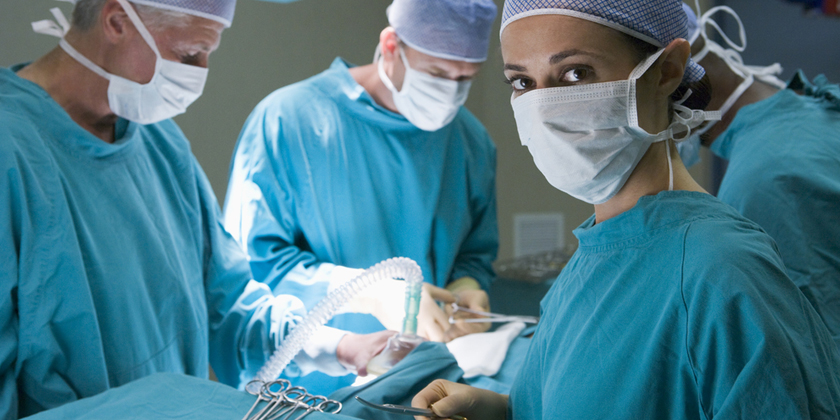The Ultimate Guide to Reconstructive Microsurgery: Techniques and Applications
What Is Reconstructive Microsurgery?
Reconstructive microsurgery combines high-powered microscopes and precision tools to repair small structures, such as blood vessels and nerves, for complex tissue reconstruction. This advanced surgical method serves various purposes, including breast reconstruction, limb salvage, and other intricate medical applications. This guide explains key microsurgical techniques and the diverse applications of reconstructive microsurgery for the year 2025.
Why Reconstructive Microsurgery Matters
Reconstructive microsurgery plays a vital role in restoring both appearance and functionality for patients who have suffered from traumatic injuries, undergone cancer surgery, or have congenital abnormalities. According to Yale Medicine, this field benefits millions worldwide. My five years spent researching surgical innovations as a health writer have allowed me to witness the life-changing impact of microsurgical techniques, ranging from nerve repairs to complex free flap surgeries. The precision of modern reconstructive surgery relies heavily on enhancements provided by robotic assistance and advanced imaging technology.
Core Techniques in Reconstructive Microsurgery
Free Flap Surgery Free flap surgery involves transferring skin, muscle, or bone tissue along with its dedicated blood supply from one part of the body to another. This tissue is then connected at the new site through microvascular anastomosis, as described by MDPI Books.
- Types: The Deep Inferior Epigastric Perforator (DIEP) flap, fibular flap, and anterolateral thigh flap represent some of the main types of free flap surgery.
- Process: Surgeons meticulously suture vessels measuring 1–3 mm under magnification levels ranging from 4x to 40x (Microsurgeon.org).
- Advancements: Robotic-assisted anastomosis is increasingly improving precision (ResearchGate, 2024).
Nerve Repair and Grafting Microsurgical procedures are used to rebuild severed nerves and fill gaps with grafts to recover both sensation and functionality (The Surgical Clinics).
- Techniques: Common techniques include end-to-end coaptation (direct reconnection), the use of nerve conduits (tubes to guide regeneration), or allografts (nerve tissue from a donor).
- Applications: These procedures are crucial for hand injuries, facial reanimation, and brachial plexus repair.
- Outcomes: Research from Thieme E-Journals shows that the enhanced tensile strength provided by modern nerve conduits improves recovery outcomes.
Lymphatic Reconstruction Supermicrosurgery techniques specifically target the repair of lymphatic vessels as a treatment for lymphedema, according to UC San Diego Health.
- Method: Lymphaticovenular anastomosis involves rerouting lymph flow from obstructed lymphatic vessels into tiny veins.
- Imaging: Near-infrared fluorescence imaging guides precision during these delicate procedures (SpringerLink).
- Impact: This technique helps prevent and manage lymphedema, particularly after cancer surgery.
Key Applications of Reconstructive Microsurgery
Breast Reconstruction DIEP or TRAM (Transverse Rectus Abdominis Myocutaneous) flaps enable natural breast reconstruction after mastectomy (ASPS – American Society of Plastic Surgeons).
- Benefits: Restores aesthetics and significantly enhances patient confidence.
- Techniques: The adoption of robotic DIEP flap harvesting is leading to less donor site morbidity (Thieme E-Journals).
- Stats: MDPI Books reports that microsurgical flap procedures achieve success rates between 95% and 98%.
Head and Neck Reconstruction Free flap surgery at Washington University addresses complex defects created by cancer removal procedures in the head and neck region.
- Flaps Used: Common flaps include the radial forearm flap and the fibular flap for jaw reconstruction.
- Challenges: The complex anatomy of the head and neck demands extremely precise anastomosis.
- Innovations: 3D visualization and exoscopes are enhancing surgical outcomes (SpringerLink).
Limb Salvage and Replantation Microsurgical procedures are critical for restoring severed limbs to patients or addressing severe traumatic injuries that threaten limb viability, according to ScienceDirect.
- Examples: This includes finger replantation and foot revascularization.
- Techniques: Vascularized bone grafts (e.g., fibular transfer) are used to reconstruct bone defects with their own blood supply.
- Success: Early intervention significantly improves functional outcomes (Microsurgeon.org).
Chronic Wound Management Microsurgical procedures are used to provide coverage for exposed bones and tendons in chronic wounds that fail to heal, as reported by PMC (PubMed Central).
- Flaps: Anterolateral thigh or latissimus dorsi flaps are commonly used.
- Preparation: Thorough wound debridement and vascular optimization are crucial steps before flap transfer.
- Outcome: These procedures restore function and can often prevent amputation.
Benefits of Reconstructive Microsurgery
- Precision: Operates on structures as small as <1 mm (ASPS).
- Functionality: Restores movement, sensation, and form to damaged areas.
- Aesthetics: Minimizes scarring at both the donor and recipient sites and aims for natural-looking results.
- Innovation: Robotic systems and advanced imaging reduce complications and enhance surgical accuracy (ResearchGate).
Risks and Limitations
- Complications: MDPI Books reports flap failure rates between 1-5%, alongside potential complications such as infections and hematomas.
- Technical Demand: The procedures require extensive specialized training and expertise from the surgical team (Washington University).
- Cost: High due to the need for specialized equipment and highly trained personnel.
- Contraindications: Conditions such as poor vascular supply or uncontrolled infections can preclude a patient from being a candidate for microsurgery (Medscape).
FAQs About Reconstructive Microsurgery
- What is reconstructive microsurgery used for? Reconstructive microsurgery restores tiny structures for complex tissue repair, including breast reconstruction, and repairs nerves (Yale Medicine).
- How does free flap surgery work? Microsurgical methods enable the transfer of a patient’s own tissue along with its preserved blood supply to a new site (MDPI Books).
- Is reconstructive microsurgery safe? Reconstructive microsurgery achieves high success rates, typically between 95% and 98%, while carrying potential risks such as flap failure and infections (ASPS).
- What’s new in microsurgery? Advanced imaging systems combined with robotic assistance are continually enhancing surgical precision (Thieme E-Journals).
Conclusion: The Power of Reconstructive Microsurgery
Reconstructive microsurgery offers revolutionary solutions for patients requiring complex tissue reconstruction and nerve repair to address trauma, cancer treatment defects, and congenital abnormalities. Microsurgical techniques provide highly precise and functional outcomes in procedures like free flap surgery and breast reconstruction. My research into surgical advancements reveals transformative possibilities, though their successful implementation requires expert specialists. Seek guidance from a board-certified microsurgeon to discuss reconstructive microsurgery options suitable for your specific situation.



